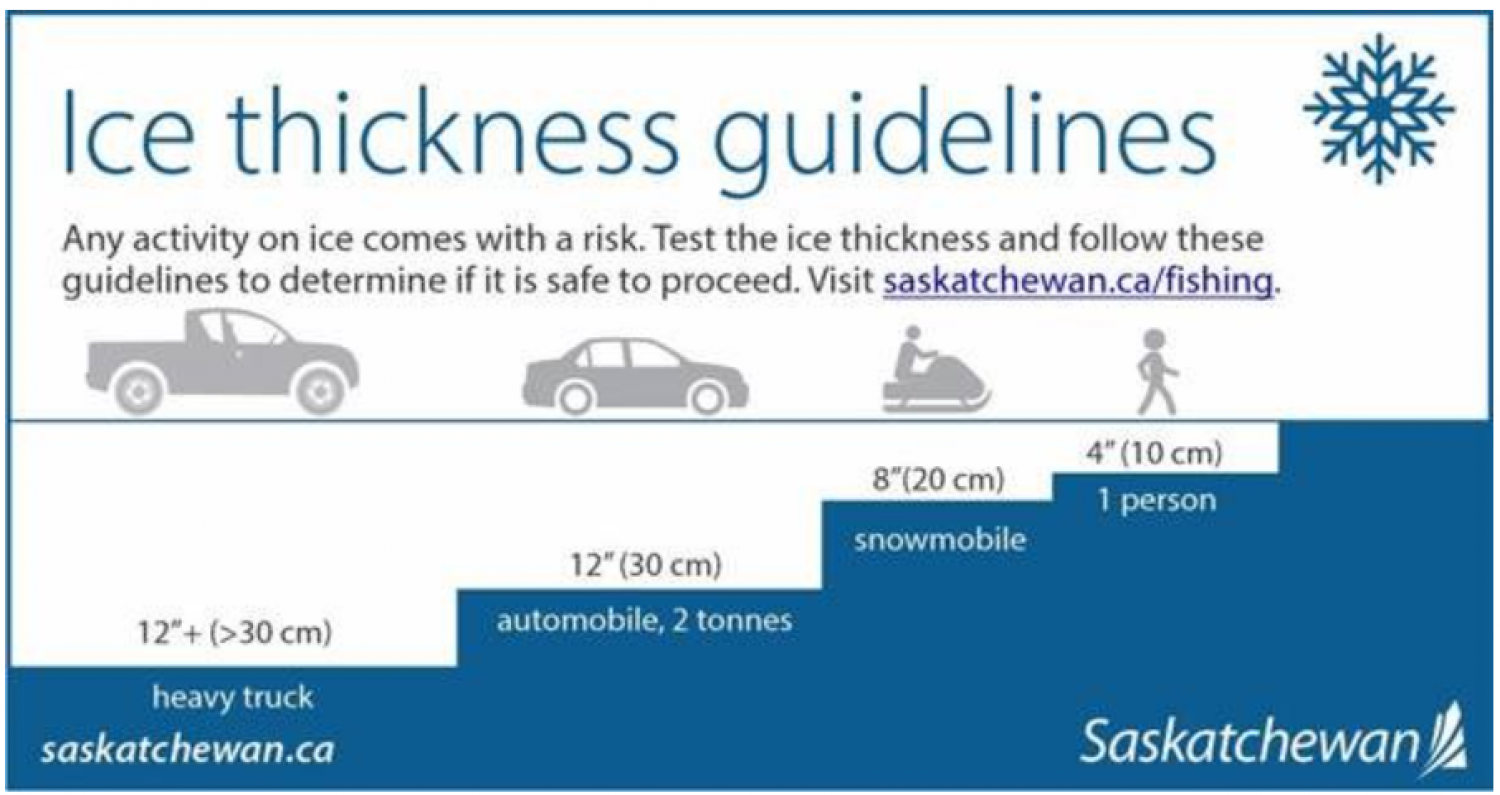Protect Yourself To Ensure Safety On Ice This Winter!

With the arrival of colder temperatures, the Water Security Agency and Government of Saskatchewan is reminding the public to make sure ice is safe and thick enough before walking or driving across it. Ice thickness depends on the particular waterbody and the local conditions.
To be sure, check the ice thickness before you travel on it. As a guideline, you need at least 10 cm (four inches) of ice to walk on, 20 cm (eight inches) to drive a snowmobile or ATV on, 30 cm (12 inches) to drive a car or light truck on, and more than 30 cm (12 inches) to support a heavy truck.
Be aware that any activity on ice has risks and guidelines are provided to help individuals make a decision about whether to venture on to the ice. Thickness is just one consideration when evaluating ice safety. Clear, hard ice is the only ice recommended for travel.
Ice does not freeze at a uniform thickness and ice strength can vary considerably from one area to another. Ice should be re-evaluated on every date visited, even if was safe on a previous date. The date that ice is becomes safe at a site varies from year to year requiring the verification of the thickness each year as opposed to relying on past experiences.
Also avoid ice that:
looks slushy;
has thawed, then froze again
is near moving water;
is layered, caused by sudden temperature changes; or
has structures on it, such as pressure ridges.
For more information about ice fishing, visit www.saskatchewan.ca/fishing to view the 2020-2021 Saskatchewan Anglers’ Guide.
In comparison to lake ice, river ice is often more hazardous and inconsistent, particularly downstream of dams when winter releases are being made. The Water Security Agency is currently releasing water from Reid Lake on Swift Current Creek and there is also flow throughout the Qu’Appelle and Saskatchewan river systems. These flows would impact the formation the ice covers and these areas should be avoided as conditions can change significantly over short distances.
* Information taken from Water Security Agency website *



